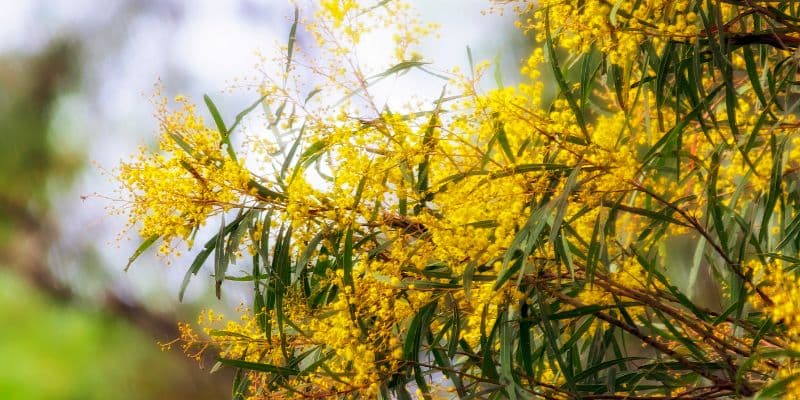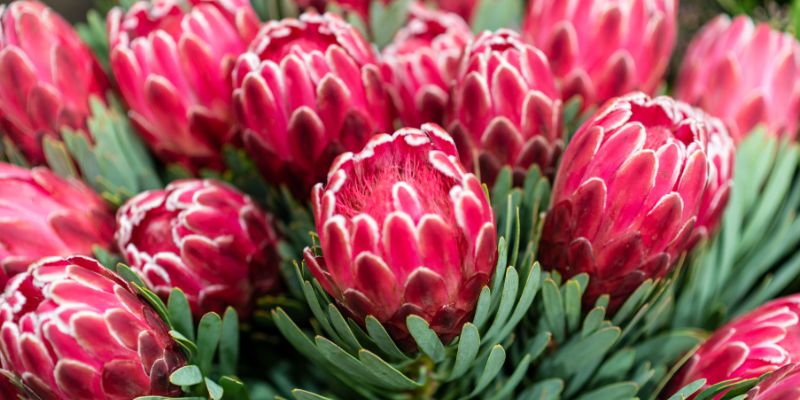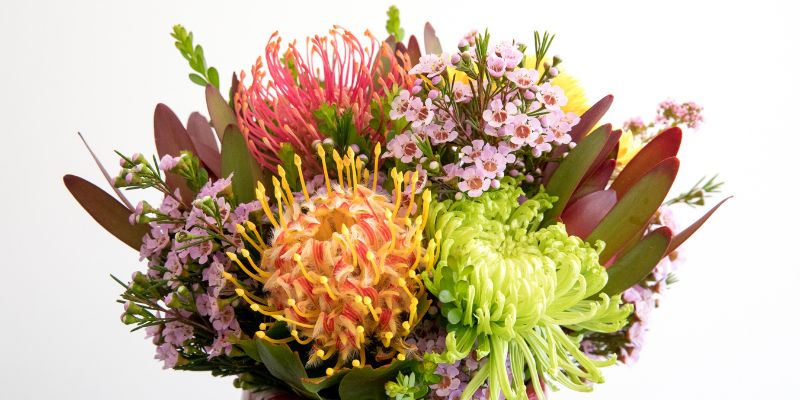Same day flower delivery available
Same day flower delivery available

Australia is renowned for its breathtaking natural landscapes, and among its most treasured secrets are the myriad native wildflowers that carpet our diverse terrains. From the sunburnt plains of the Outback to the lush coastal fringes, Australia's wildflowers bring vibrant colour, intricate patterns, and a deep sense of connection to the land. In this guide, we'll explore the beauty, ecology, and care of Australia’s native blooms, celebrating their unique role in our environment and culture. Look no further than our very own florists if you are looking to gift native Australian flowers or decorate your own home with wildflowers.
Australia is home to thousands of native flowering species, each adapted to thrive in the country’s varied climates and landscapes. These wildflowers aren’t just beautiful—they’re essential components of Australia's ecosystems, providing habitat and food for native insects, birds, and mammals. Some standouts include:
Each of these wildflowers carries a story of survival and adaptation, making them a fascinating subject for any nature lover.

Australian wildflowers have evolved over millennia under the influence of unique climate conditions and soil types. Many species are adapted to withstand extreme temperatures, drought, and nutrient-poor soils, making their resilience particularly inspiring.
For instance, the Waratah has deep roots and a hardy constitution, enabling it to survive harsh bushfire seasons that are common in Australian landscapes. Similarly, plants like the Sturt's Desert Pea employ deep root systems to access scarce water supplies, while others have developed seed dormancy, allowing them to germinate only after bushfires, thus taking advantage of the nutrient-rich ash.
These adaptations not only highlight the plants' tenacity but also their crucial role in the regeneration of ecosystems. After a bushfire, wildflowers are often among the first to bloom, kickstarting the recovery process and providing food and shelter for wildlife.
Australia boasts distinct wildflower seasons that vary from region to region. In coastal areas, wildflowers may start blooming in late winter and continue into early spring, filling the landscape with a kaleidoscope of colours. In the central deserts, wildflower displays often occur after rare rainfalls, creating ephemeral but breathtaking spectacles.
Understanding these seasonal patterns can enhance your appreciation and interaction with wildflowers. Regional flower festivals, such as the Australian National Botanic Gardens’ Wildflower Festival or local community events, often celebrate these natural displays, offering guided walks, workshops, and opportunities to learn about indigenous flora.
While wildflowers are a natural treasure of Australia, many enthusiasts also seek to incorporate native blooms into their own gardens. Here are some tips on how to encourage wildflowers to thrive in a home garden setting:
1. Choose Appropriate Species:
Select wildflower species that are native to your region and suited to the local climate and soil. Local nurseries or native plant societies often provide guidance on what grows best in your area.
2. Prepare Your Soil:
Australian wildflowers often thrive in poor, well-draining soils. Avoid nutrient-rich composts and fertilisers that can encourage the growth of weeds and non-native plants. Instead, focus on mimicking natural conditions by lightly tilling the soil and removing competing vegetation.
3. Water Wisely:
Many native plants are drought-tolerant. Over-watering can harm them by promoting root rot and disease. During establishment, water sparingly, and once established, rely on natural rainfall where possible.
4. Sunlight and Space:
Most wildflowers love full sun, so choose a spot that receives plenty of daylight. Providing enough space between plants ensures they have room to grow and spread naturally, creating a more authentic wildflower display.
5. Minimal Intervention:
One of the joys of wildflowers is their natural, untamed beauty. Resist the urge to over-prune or reshape them, and allow the plants to grow in a way that reflects their natural habitat. This approach not only preserves the authenticity of your wildflower garden but also supports local wildlife.

Caring for wildflowers in the wild, as well as in our gardens, is an important part of conserving Australia’s unique biodiversity. Habitat destruction, invasive species, and climate change threaten many native plants. By cultivating native wildflowers at home and supporting conservation efforts, gardeners can contribute to the preservation of these species.
Consider joining local conservation groups, participating in community seed exchanges, or volunteering for habitat restoration projects. These activities not only help protect wildflowers but also foster a deeper understanding of Australia’s natural heritage.
Wildflowers hold a special place in Australian culture and art. Indigenous communities have long revered these plants, using them in traditional medicine, storytelling, and art. The colours and shapes of wildflowers inspire countless paintings, textiles, and jewellery, reflecting the deep connection between Australians and their land.
Celebrating wildflowers can be as simple as taking a nature walk during peak blooming seasons, photographing the intricate details of a rare bloom, or learning about the cultural stories behind these plants. Each flower is a piece of the larger narrative of Australia—its history, its people, and its relationship with nature.
See our wide selection of native flowers from simple arrangments to exquisite bouquets, we have the perfect native bouquet for any occasion or style. Share your photos of Australia's wildflowers and tag us on Facebook or Instagram.
